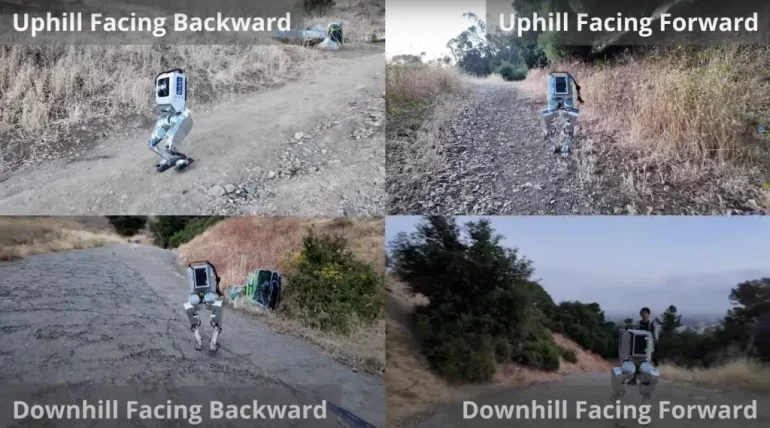- UC Berkeley introduces the Berkeley Humanoid, a mid-scale robot platform for academic research.
- The platform is affordable, modular, and easy to repair, making it accessible to research labs with limited budgets.
- The robot is constructed with custom-designed components and simplified, mechanically designed features.
- High-speed simulation capabilities allow for rapid training of learning-based control models.
- Priced around $10,000, it is significantly cheaper than comparable robots.
- The Berkeley Humanoid demonstrates strong performance in varied terrains and environments.
- Future enhancements include adding arms, integrating cameras, and improving the power system.
Main AI News:
UC Berkeley has introduced the Berkeley Humanoid, an innovative mid-scale robot platform designed to address the high costs and limited accessibility of advanced humanoid robots in academic research. This platform bridges the gap between expensive commercial robots and the impracticality of building custom robots from scratch, offering a cost-effective, modular, and easy-to-repair solution for research labs.
The Berkeley Humanoid is a fully electric, 16-kilogram robot constructed from custom-designed components, including actuators, sensors, and a control board. Its simplified mechanical design, free of complex elements like springs and dampers, reduces cost and simulation complexity. This factor allows for high-speed simulation, accelerating the training of learning-based control models—achieving speeds of over 90,000 steps per second on an Nvidia A4500 GPU.
With a manufacturing cost of approximately $10,000 (excluding arms), the Berkeley Humanoid is significantly more affordable than comparable robots, which can cost over $100,000. Its design supports rapid experimentation and algorithm development, making it an invaluable tool for advancing research in learning-based control techniques.
The robot operates safely and efficiently in indoor environments and is easily maneuverable by a single operator. It employs a model-free reinforcement learning (RL) system with optimized observation and action spaces to reduce computational costs during training. The training was conducted in the Isaac simulated environment using the proximal policy optimization (PPO) algorithm, resulting in a minimized sim-to-real gap—a critical factor in a real-world deployment.
The Berkeley Humanoid demonstrated robust locomotion across various terrains, including grass, sidewalks, unpaved trails, and stairs. It also showcased impressive recovery capabilities, maintaining balance after being kicked in different directions. These tests validated the platform’s effectiveness and confirmed the narrow sim-to-real gap achieved by its design.
Looking ahead, the research team plans to enhance the Berkeley Humanoid by adding arms for manipulation tasks, integrating cameras for perception, and improving its power system for extended operation. As an affordable and scalable research platform, the Berkeley Humanoid is poised to play a vital role in advancing the field of humanoid robotics.
Conclusion:
The introduction of the Berkeley Humanoid marks a significant shift in the humanoid robotics market, particularly for academic and research institutions. By offering a cost-effective and easily adaptable platform, UC Berkeley will likely stimulate increased research and innovation in learning-based control algorithms and robotics. This nuance could lead to accelerated advancements in humanoid robotics, driving down costs and making these technologies more accessible across various sectors. As a result, we may see a democratization of humanoid robotics research, fostering new developments that could extend beyond academia into commercial applications.

